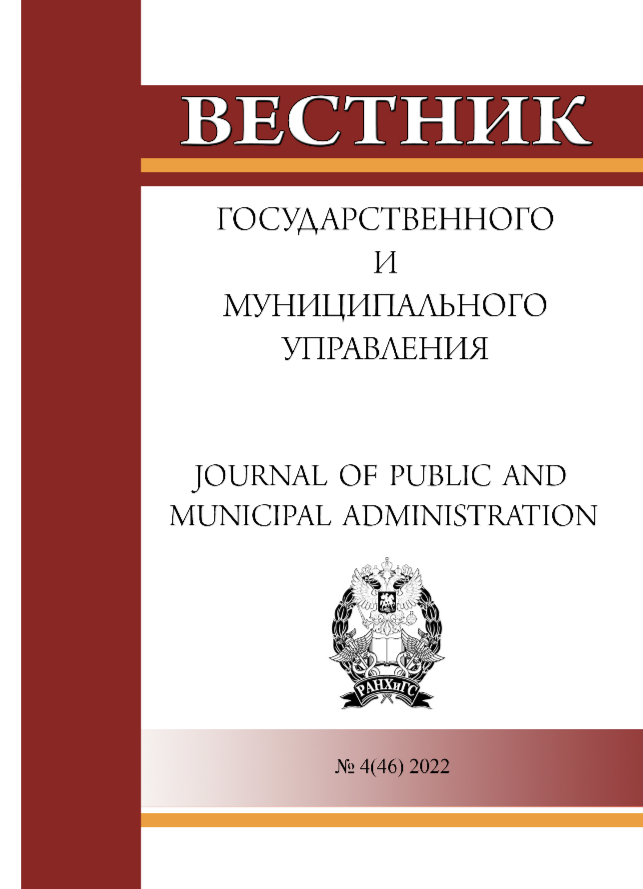Ustinova Y.N. Censorship as an indicator of socio-political attitudes and practic es in 1914-1917 (evidence from the German empire)
DOI:10.22394/2225-8272-2022-11-4-103-110 EDN: PDDARC
Keywords:
censorship, information, military objectives, trust in the government, First World War, German EmpireAbstract
The purpose of the article is to characterize the phenomenon of the concept of «censorship» as an indicator of socio–political attitudes and practices in 1914-1917 in the German Empire.
During this period, the role of information increased, the method of exercising control over which was the resumption of censorship, abolished in the 1870s. It stressed that the conditions for the implementation of the law are changed. The imperial government had no experience in organizing and conducting information work in wartime. The work of censorship agencies has significantly changed the content of news reports and the appearance of newspaper issues. From now on, reports on events from the front were printed strictly in a patriotic spirit; deliberate silencing of real events was practiced; printing of frankly false information was frequent; in order to avoid the anxiety of the population, large volumes of material were cut out of the already finished issue, so «censorship holes» or «white spots» appeared. The main characteristic of the news was their monotony. Against this background, the flywheel of rumors and speculation began to unwind, which gradually created tension in society, leading to its polarization. The inconsistency of actions in the highest political and military circles, the lack of political unity in parliament led to the tightening of the current regime as a way out of the current situation. All these processes were accompanied by the emergence of restless, even reactionary, moods of the population, the strengthening of German distrust of the Kaiser and the authorities in general, the deterioration of the socio-economic situation in the country. The culminating period occurred at the turn of 1916-1917. The resolution of the situation was the November revolution of 1918.
The article is written with the Russian Science Foundation’s support.
(Project No. 22-28-00900 «The Russian periodical press and censorship in the theater of military operations as indicators of socio-political sentiments and practices (1914-1917)»).
References
Библиография / References:
Koszyk K. Deutsche Presse 1914-1945: Geschichte der deutschen Presse. Teil III. – Berlin: Colloquium Verlag, 1972. – 587s. (in Deutsch).
Demm E. Censorship and Propaganda in World War I: A Comprehensive History. – Lon-don: Bloomsbury Academic, 2019. – 349р. (in Deutsch).
Wilke J. Zensur und Pressefreiheit // Eu-ropäische Geschichte Online (EGO), hg. vom Leibniz-Institut für Europäische Geschichte (IEG). Mainz. – 2013. – 18 April. [Электронный ресурс]. – URL: http://ieg-ego.eu/de/threads/europaeische-medien/zensur -und-pressefreiheit-in-europa (дата обращения: 15.08.22). (in Deutsch).
Neue Freie Presse. – 1916. – №18731. – 13. Oktober. (in Deutsch).
Deutsche Tageszeitung. – 1916. – № 277. – 31 August. (in Deutsch).
Deutsche Tageszeitung. – 1916. – №278. – 31 August. (in Deutsch).
Vorwärts. – 1916. – 31Mai. (in Deutsch).
Neue Freie Presse. – 1916. – №18743. – 25. Oktober. (in Deutsch).
Deutsche Tageszeitung. – 1916. – №311. – 20 Februar. (in Deutsch).
Der erste Weltkrieg 1914-1918. Begleit-heft zur Dauerausstellung. Berlin. 2013, 61s. (in Deutsch).

Downloads
Published
How to Cite
Issue
Section
License
Copyright (c) 2022 Ustinova Y.N.

This work is licensed under a Creative Commons Attribution-NonCommercial 4.0 International License.



